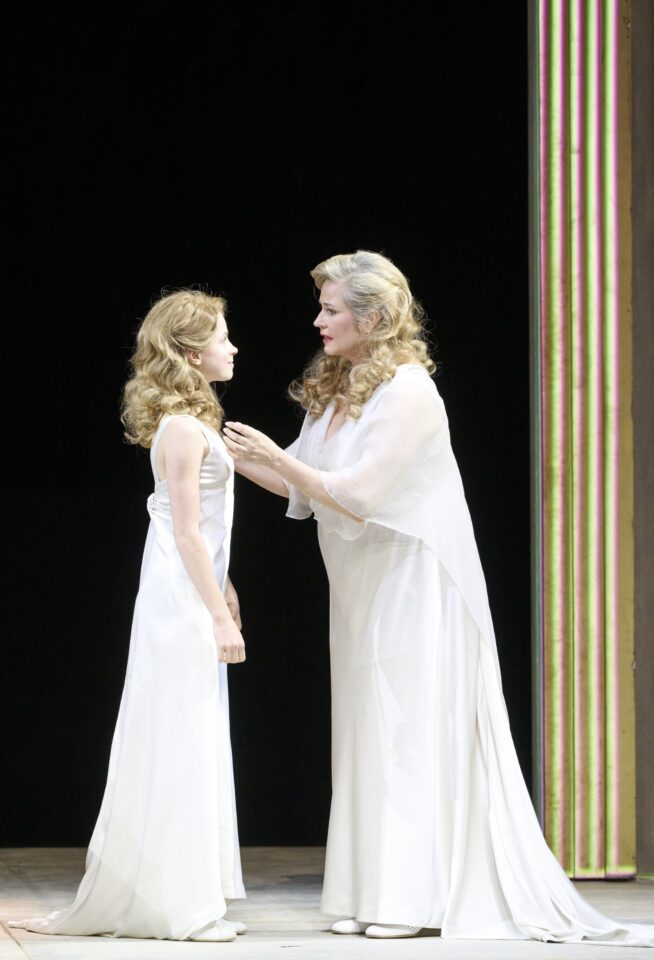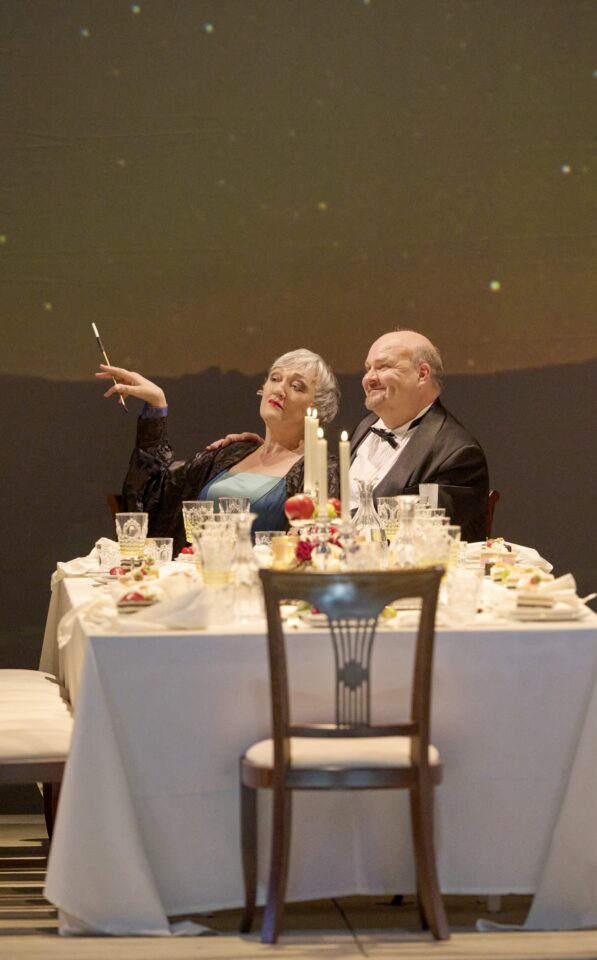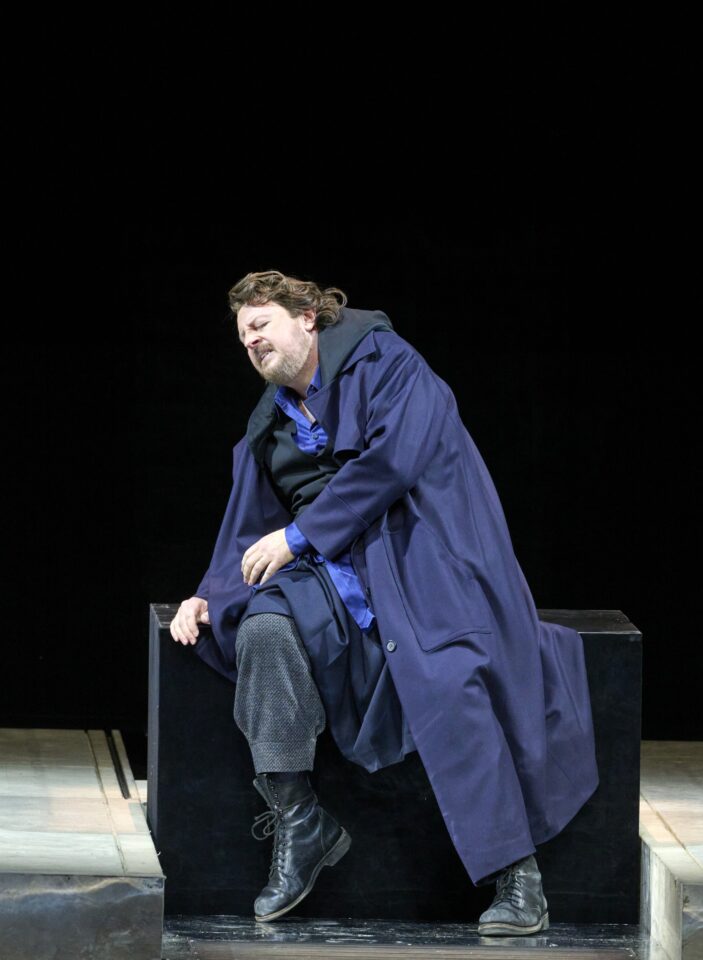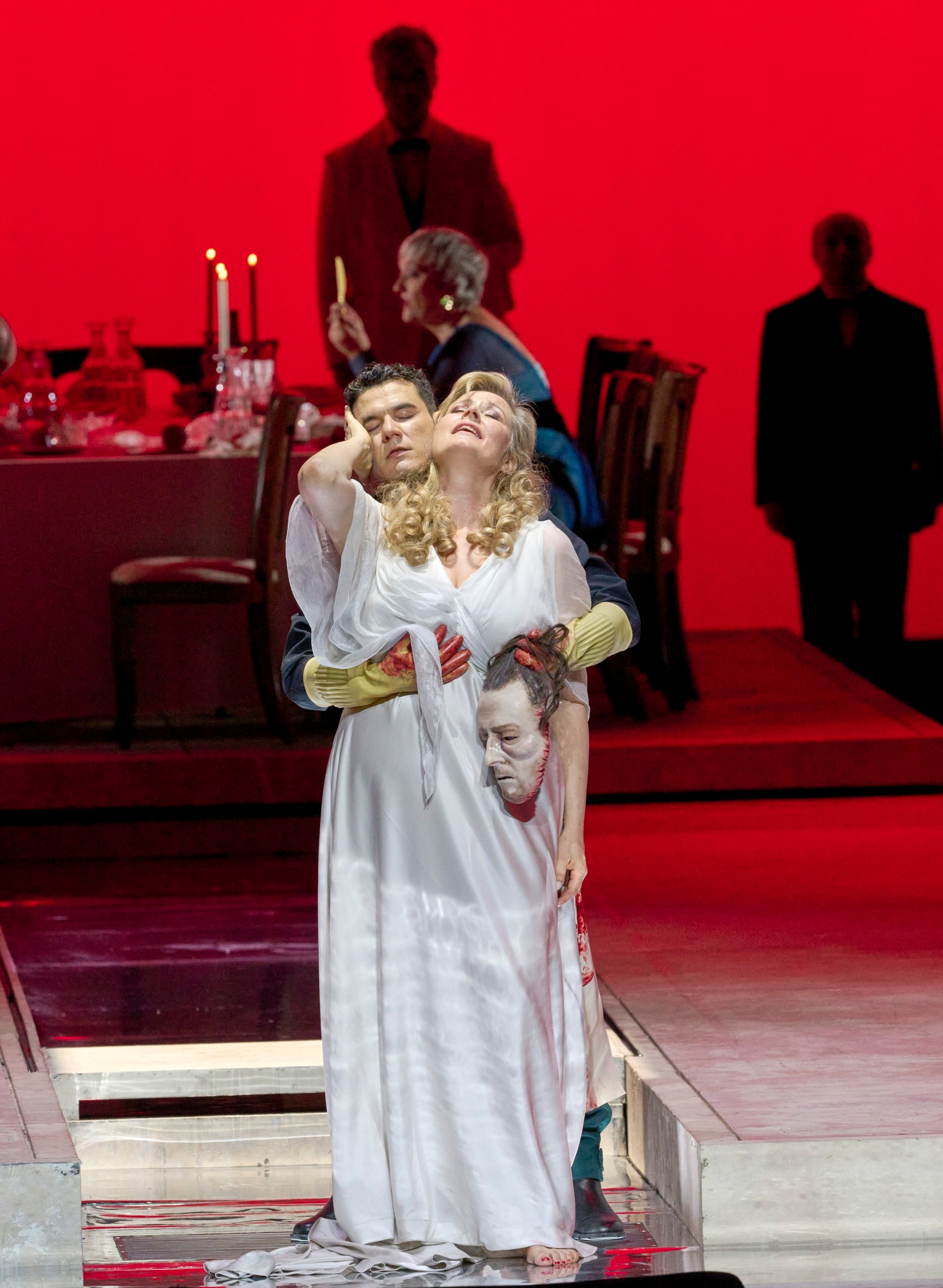Following Turandot, we are thrilled to experience the Vienna Philharmonic Orchestra in another masterpiece that showcases the ensemble’s brilliance. Especially when it concerns Richard Strauss, the epitome of Viennese musical excellence, who was not only a brilliant composer but also one of Vienna’s most celebrated conductors and the director of the Vienna Opera from 1919 to 1925.
Once again, within the span of a day, the rich and opulent score of Strauss provides a superb opportunity for the musicians of this institution to present the audience with a listening experience—dare we say it—unparalleled in the world. This performance is a pinnacle of Viennese musical expression, elevated to incandescence and prominence. As Piotr Kaminski aptly notes, “The polyphonic framework of the orchestral part, already more intricate than Wagner’s most elaborate structures, allows for a proliferation of diverse and contradictory meanings and allusions.”

Salome is one of the “cult classics” of the operatic repertoire. The day after Asmik Grigorian’s Turandot, it was hard not to recall her extraordinary portrayal of the biblical character in the 2018 Salzburg Festival production, directed by Romeo Castellucci. Her breathtaking introspection and interpretative genius as the Lithuanian soprano marked a significant moment in the interpretative history of the work, as unanimously acclaimed by critics.
Cyril Teste’s staging adheres to a more traditional approach. When the curtain rises, we witness a social dinner transposed to a contemporary setting. It’s a lavish gala akin to a modern court, though set in a somewhat unsettling atmosphere with armed soldiers ensuring the guests’ security.
On stage, a cameraman films the protagonists in close-up, projecting live onto a screen at the back. This familiar technique, which Teste also employed in his productions of Hamlet (2018) and Fidelio (2021) at the Opéra Comique in Paris, while intriguing, risks becoming overly systematic. Close-ups can sometimes disadvantage performers, especially in opera where physical appearance is less critical than in film. Additionally, the presence of a cameraman can disrupt the audience’s focus and the perceived authenticity and continuity of the drama.
Valérie Grall’s set design is somewhat minimalistic and often squarely conventional. What’s missing is the heightened eroticism and extreme madness that one expects from Salome. In comparison, notable contemporary productions like Jean-Luc Bondy’s in London with Catherine Malfitano or David McVicar’s at the Royal Opera House with the mesmerizing Nadja Michael come to mind—both conducted by Philippe Jordan.
In an attempt to break from tradition, the director introduces two “clones” of Salome, young teenage girls who mirror the titular role. This choice is perplexing, though it allows one to perform a well-executed choreographic number in the Dance of the Seven Veils. However, the presence of multiple Salomes and the static nature of scenes between Salome and Jochanaan lead to frustration. The performance lacks the essential incandescent violence and frenzied eroticism that Strauss’s music and Wilde’s text demand.
Despite these shortcomings, the ensemble scenes are relatively well-executed, though the tonal shifts in the set design—from the exuberant family meal to the stark, geometric confrontation between Salome and Jochanaan—are jarring. This production focuses more on the neurosis of Herod and Herodias than on the dynamic between Salome and the prophet.
The use of live video finds its justification during the Dance of the Seven Veils, performed impeccably by the adolescent Salome. However, the physical disparity between the dancing and singing Salomes raises questions of dramatic credibility. The 2022 Festival d’Aix-en-Provence production, featuring Elsa Dreisig as a more childlike Salome, provided a more consistent interpretation aligned with Strauss’s musically “lightened” 1929 version.
Despite the occasional indifference elicited by the staging, the orchestral execution overshadows all reservations. The Vienna Philharmonic, under the inspired baton of Richard Strauss specialist Philippe Jordan, delivers a performance that obliterates all doubts. Their unparalleled artistry, coupled with the vocal prowess of the performers, provides an exceptional musical experience.

Camilla Nylund’s vocal portrayal of Salome is exceptional. Her career, marked by fervent and talented interpretations of both Wagner and Strauss, shines in her final scene. Despite the static staging, her warm timbre, ideal breath control, sovereign technique, and profound expressiveness earn her a richly deserved ovation.

Gerhard Siegel (Herod) and Michaela Schuster (Herodias) are experienced and commanding, delivering powerful performances. Unlike many interpreters who resort to caricature, they present voices that are clear, assertive, and beautifully colored. Both excel in their roles, demonstrating excellent acting and vocal skills. Special mention goes to Daniel Jens’ remarkable Narraboth for his clear timbre and impactful delivery.

Iain Paterson’s Jochanaan, though competent, pales slightly next to his co-stars. The remainder of the cast upholds the high standards of the Vienna Opera.
In conclusion, the musical richness of the Vienna Opera Orchestra, coupled with Philippe Jordan’s galvanizing direction, results in an outstanding production. It is a point of pride that a conductor of French origin achieves such a musical miracle in a city where music reigns supreme.
Christian Jarniat
5 June 2024
Direction musicale : Philippe Jordan
Mise en scène : Cyril Teste
Collaboration artistique : Céline Gaudier
Décors : Valérie Grall
Costumes : Marie La Rocca
Lumières : Julien Boizard
Chorégraphie : Magdalena Chowaniec
Vidéo Design : Mehdi Toutain-Lopez
Vidéo Design-Live Camera : Rémy Nguyen
Dramaturgie : Sergio Morabito
Distribution :
Hérode : Gerhard Siegel
Hérodias : Michaela Schuster
Salomé : Camilla Nylund
Jochanaan : Iain Paterson
Narraboth : Daniel Jens
Le Page : Patricia Nolz
La jeune Salomé : Jana Radda
La jeune Salomé (danse) : Anna Chesnova
Orchestre de l’Opéra de Vienne
References:
- Piotr Kaminski, Mille et un opéras, Fayard Éditeur
- Richard Strauss revised his score in 1929 to lighten it for more delicate lyric sopranos, acknowledging that the original orchestration required a Wagnerian heroine’s dramatic soprano tessitura.


